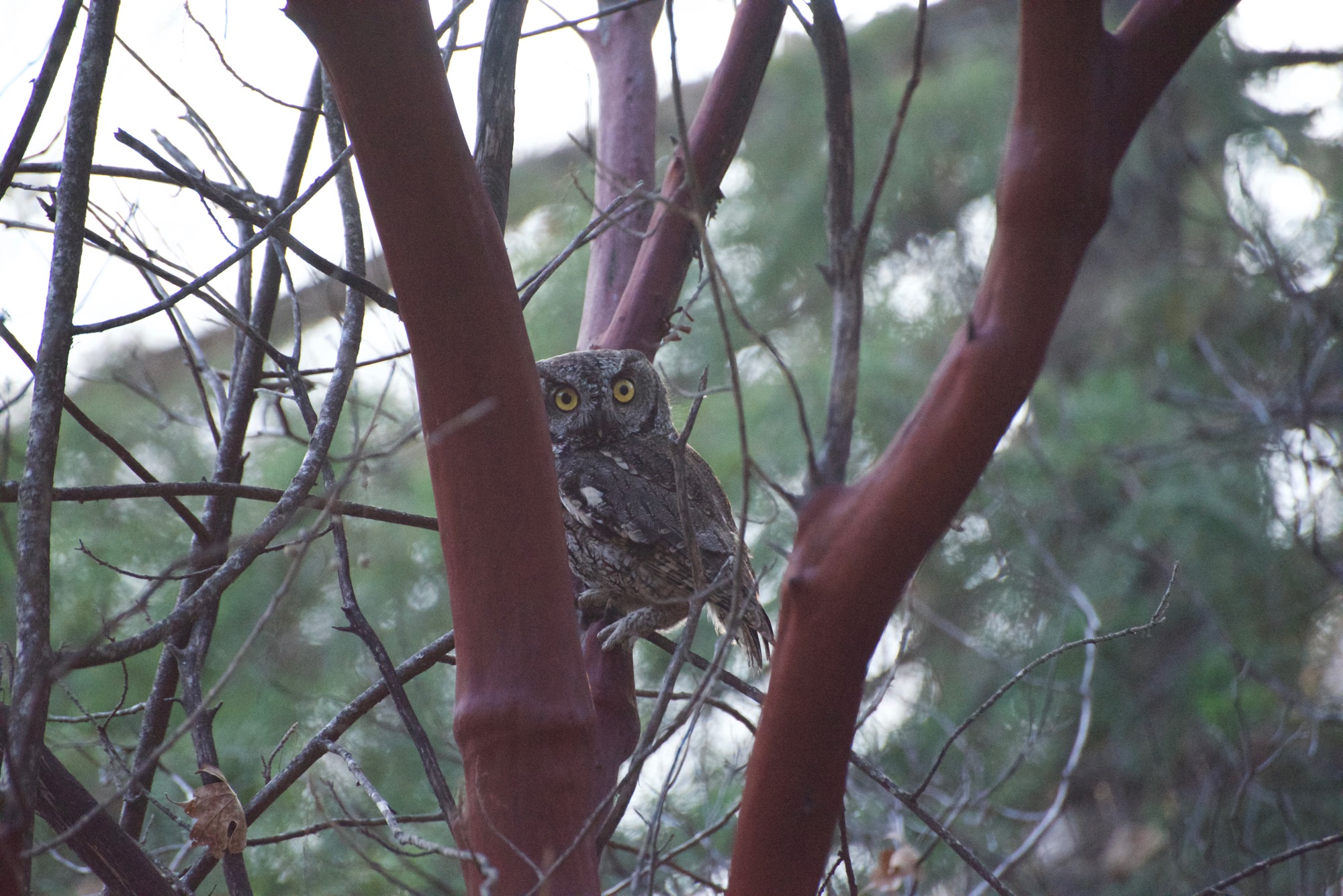
One of the first questions we ask when someone calls to report an injured wild animal is “where are you located?” Typically we ask the caller if they can provide the transportation. We admit 1200 patients each year and need all the help we can get with transport. But a lot of the times, the caller simply can’t. So we do a lot of driving. We serve a region that’s over 10,000 square miles in size, larger than nine of the states of our Union!
So when we got a call from someone in mid-November who’d found a Western Screech-owl (Megascops kennicottii) on the ground, not moving, and he was not able to drive the owl to our facility in Bayside, we googled his address. Turns out he was at the north end of Ruth Lake, 85 mountainous miles away.
When our staff arrived there, the owl was being kept in an old bird cage, and was barely responsive when moved to our transport carrier.
After the four hour round trip, the owl was given a complete examination. Based on weight, we assumed that she is female. Like most birds of prey, female Screech-owls can be as much as 30% larger than males.


 Capturing in our aviary for an examination. Handling is very stressful for wild patients. We do so as little as possible.
Capturing in our aviary for an examination. Handling is very stressful for wild patients. We do so as little as possible.
She was suffering from head trauma – with a very depressed attitude, a neurological symptom in the form of a repeated turning her head to the left, as well as some blood in her left eye. She clearly had taken a blow, either by colliding with a building or being hit by a vehicle. We administered fluids and anti-inflammatory medicine. Heat supported housing was necessary for her first few days in care.
Soon she was more alert, eating offered mice, and beginning to show other optimistic signs, such as trying to bite and clutch us with her talons when she was handled.
After a week, she seemed ready to move to our outdoor aviary. While she continued to eat and do well, her flight, however, was very erratic. She lacked control and couldn’t maintain level flight in a straight line. More time would be needed.
The late months of the year always see a sharp increase in owls, especially Western Screech-owls, as patients admitted to our wildlife hospital, Humboldt Wildlife Care Center. The reasons are hard to know for sure, but it is probably a combination of the newly independent hatch-year (birds fledged the same year) juveniles who lack experience, and the shorter days that put nocturnal birds like owls into the predicament of hunting while evening rush hour traffic is still heavy. Whatever the reasons, we’ve admitted 27 Screech-owls so far in 2017, with 18 of them coming in since the end of Summer.
It took a few weeks for this owl to get her bearings back. But she did. Each week she flew with more strength, more control, more endurance. We reduced our handling of her to every seven days, so that her stress would be minimized as much as possible. At last, after 5 weeks in care, she was ready to go!
We took her back to her mountain home and released above the shores of Ruth Lake.
 On a mountainside above Ruth Lake (created by damming the Mad River) preparing to release!
On a mountainside above Ruth Lake (created by damming the Mad River) preparing to release!





 She left the box with no hesitation and put some safe distance between us before turning ducking into the thicket.
She left the box with no hesitation and put some safe distance between us before turning ducking into the thicket.
 From a safe perch she paused and seemed to consider her options. And for the first time since she was injured she had some meaningful ones!
From a safe perch she paused and seemed to consider her options. And for the first time since she was injured she had some meaningful ones!

 And then she split.
And then she split.
 Thataway —- into the Cimarrón…
Thataway —- into the Cimarrón…
Our patients at HWCC come from all over our region and some even from further away. We’ve cared for animals brought to us from Ukiah, Mount Lassen – even Modesto!
So far in 2017 we’ve provided hands on care for nearly 1,148 patients and helped resolve conflicts that would’ve ended in death or injury to thousand more wild animals. The only reason we’ve been able to do so, is because of your generous support. If you’d like to help, please, donate today! Thank you!!

all photos: Laura Corsiglia/BAX

